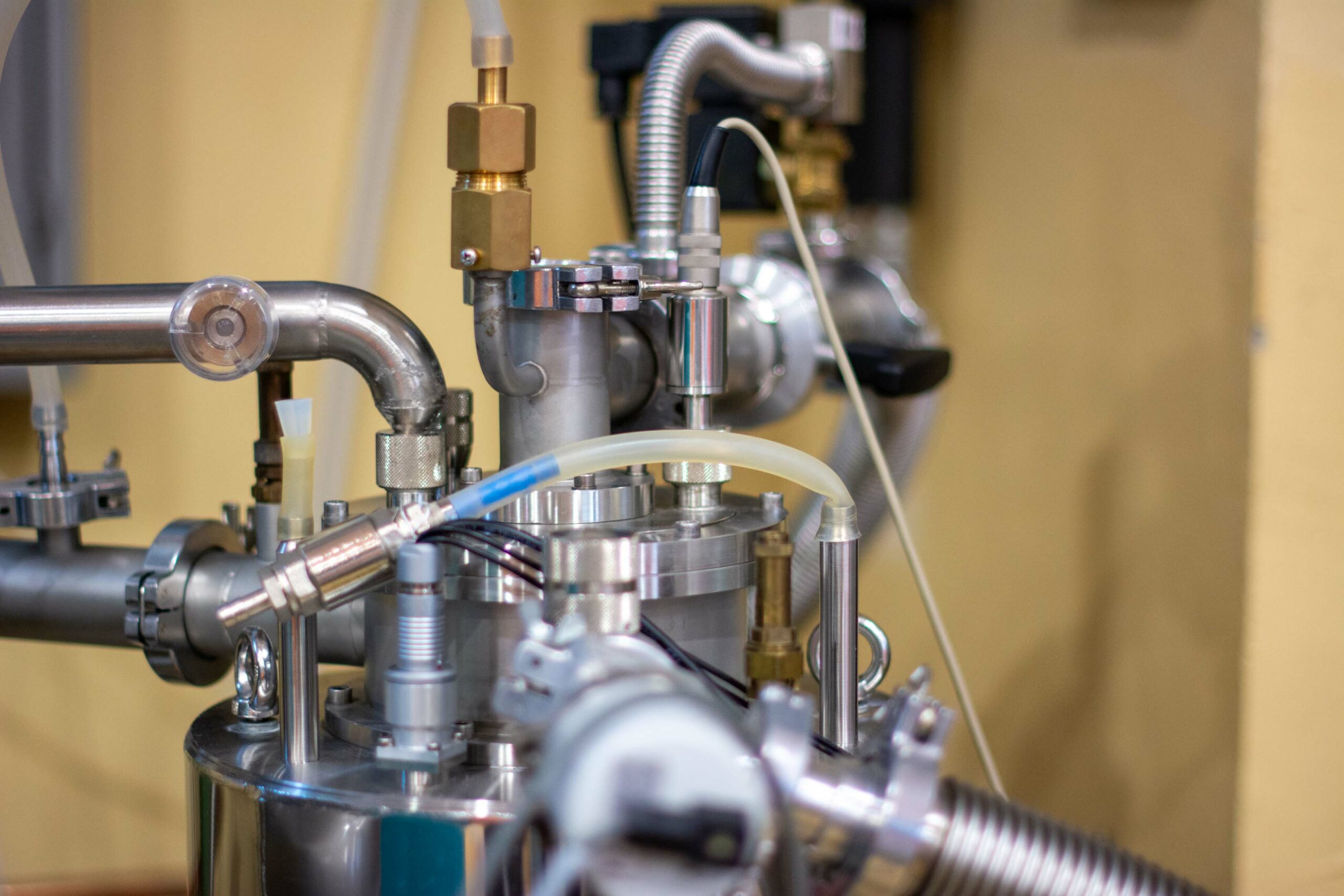- Name: In-beam Mössbauer spectrometer
- Technique: 197Au, 57Fe and 119Sn Mössbauer spectroscopy
- Range of investigated features: chemical state of gold, iron and tin atoms
- Typical size of sample: up to ca. 1 g
- Measurable materials: powders and thin layers
- Contact: ibms@bnc.hu
- Poster of the instrument

Mössbauer spectroscopy is an outstanding non-destructive method for the qualitative and quantitative analysis of solid samples containing suitable Mössbauer active elements in high enough concentrations. Our 57Fe, 119Sn and 197Au Mössbauer spectrometers enable the characterization of iron-, tin- and gold-containing solid materials, respectively. Materials with natural isotopic composition of Fe, Sn and Au can be readily measured in all the three cases. Mössbauer spectra reflect on the magnetic and chemical state of the Mössbauer active element. Respective Mössbauer spectra can often clearly indicate the presence and relative occurrence of iron, tin and gold atoms with different oxidation states in the sample. Different phases, atomic- and ligand environments of iron, tin and gold atoms may be detected and distinguished. Identification of known phases of Fe/Sn/Au may be possible.
Samples should be either powders or thin layers. 57Fe and 119Sn Mössbauer measurements are performed at ambient temperature (ca. 293-300 K), while 197Au Mössbauer measurements are carried out with the absorber and the source both being cooled to the same temperature typically lying in the range of 4.2-25 K. The latter temperatures are achieved by applying liquid helium cooling in a suitable CryoVac cryostat system. Individual Mössbauer measurements typically take 1-5 days to complete.
Mössbauer spectroscopy is an outstanding non-destructive method for the qualitative and quantitative analysis of solid samples containing suitable Mössbauer active elements in high enough concentrations. Our 57Fe, 119Sn and 197Au Mössbauer spectrometers enable the characterization of iron-, tin- and gold-containing solid materials, respectively. Materials with natural isotopic composition of Fe (natural abundance of 57Fe is ca. 2.12%), Sn (natural abundance of 119Sn is ca. 8.59%) and Au (197Au: 100%) can be readily measured in all the three cases. Mössbauer spectra reflect on the magnetic and chemical state of the Mössbauer active element. Respective Mössbauer spectra can often clearly indicate the presence and relative occurrence of iron, tin and gold atoms with different oxidation states in the sample. Different phases, atomic- and ligand environments of iron, tin and gold atoms may be detected and distinguished. Identification of known phases of Fe/Sn/Au may be possible. Individual Mössbauer measurements typically take 1-5 days to complete.
Samples should be either powders or thin layers. The sample holder can hold up to ca. 1 g of powdered sample. This should contain at least 5 mg of Fe/Sn or at least 30 mg of Au to facilitate the measurement of 57Fe/119Sn/197Au Mössbauer spectra with acceptable S/N ratio. Two Mössbauer spectrometers are available: one for measurements at ambient temperature (ca. 293-300 K, applied for 57Fe and 119Sn Mössbauer measurements) and one for 197Au Mössbauer measurements that are carried out with the absorber and the source both being cooled to the same temperature typically lying in the range of 4.2-25 K. The latter temperatures are achieved by applying liquid helium cooling in a suitable CryoVac Konti-IT-Spektro-He cryostat system. Both spectrometers are based on a high accuracy Wissel Mössbauer spectrometer system utilizing Wissel’s MVT-1000 Mössbauer Velocity Transducer, MR-360 Mössbauer Drive Unit, DFG-1000 Digital Function Generator and CMCA-550 Data Acquisition Module, among others. To optimize S/N ratio of the measured spectra, a Saint-Gobain scintillation detector is applied when measuring 197Au and 119Sn Mössbauer spectra, while an LND-45431 (Kr) proportional counter is used for the purposes of 57Fe Mössbauer spectroscopy. For 57Fe and 119Sn Mössbauer measurements commercial radioactive sources of 57Co(Rh) and 119mSn(CaSnO3) are applied, respectively. 197Au Mössbauer spectroscopy is performed by using a 197Pt radioactive source prepared via neutron irradiation of a Pt foil (94.57% enriched in 196Pt) in the Budapest Research Reactor. The 196Pt(n,γ)197Pt reaction produces the Mössbauer source with a half-life of ca. 19.9 hours, which remains then usable for a few days.